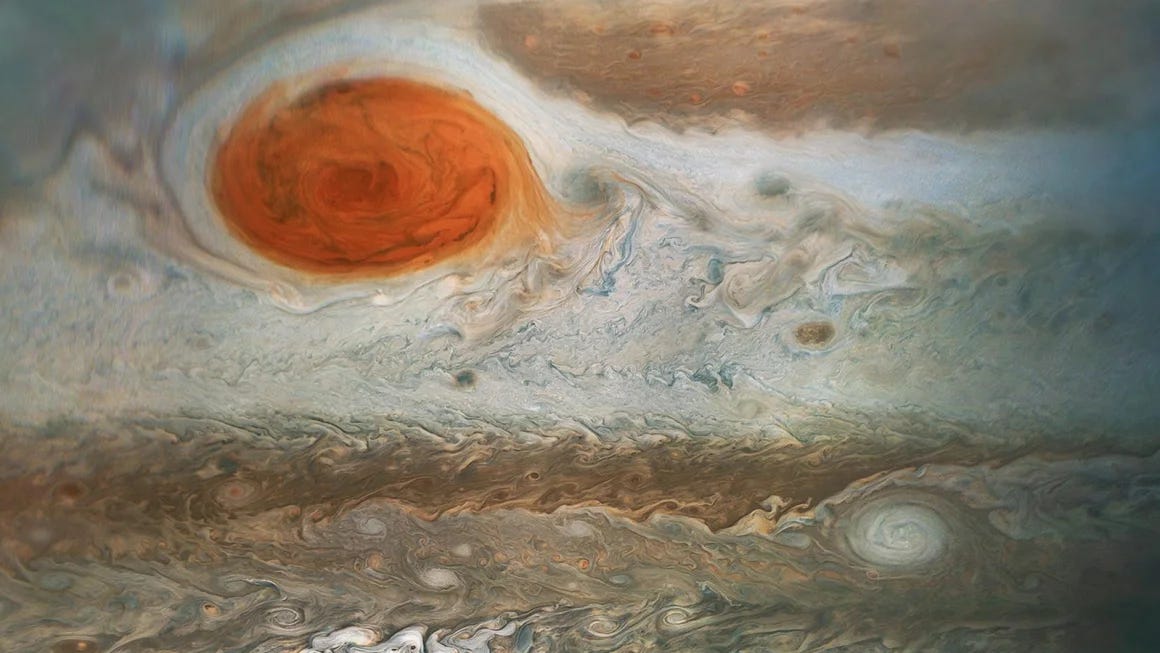Weekly - Astronomers believe they witnessed awakening of a black-hole and more
🟡 Weekly Space News - Quick and Easy.
This week’s post ranks yellow 🟡 on the Engagement Palette.
Chinese-French Gamma-ray satellite lifts off into space
Last week, China successfully launched its satellite collaboration with France, the Space Variable Objects Monitor (SVOM) into space. The satellite is designed to study Gamma-ray Bursts or GRBs ( one of the most powerful explosions in space ). Equipped with high-end instruments and sensors, SVOM will provide valuable insights into supernovae, star mergers and more.
Research unveils shocking truth about the Great Red Spot
Until recently, the age of Jupiter’s iconic ‘ Great Red Spot’ was under dispute. The massive storm larger than the size of the Earth, was first believed to have been spotted by Giovanni Cassini in the 17th century. Later the storm mysteriously disappeared in the year 1713. Nearly a century later, the storm was again spotted at the same location. This led experts to question whether this was the same storm observed by Cassini or a new one. Now that question has been answered. Researchers analysed data from drawings and figures of the first storm using computer simulations and concluded that it is highly unlikely that the first storm lasted this long, and that what Cassini had spotted was something else. The ‘Great Red Spot’ must have formed just 190 years ago. It is still the largest and longest-lasting storm in our solar system.
Astronomers believe they just witnessed the awakening of a black-hole
5 years ago, a galaxy named SDSS1335+0728 (Yes, that is what they call it), located 300 million light-years from Earth, suddenly began to become brighter and brighter in a way that nobody had ever seen before. It has only gotten brighter since. This phenomenon couldn’t have been merely just a star or a supernova, it lit the entire galaxy up. Recently scientists have come to the conclusion that they had just witnessed the awakening of a dormant supermassive black hole at the centre of the galaxy. This is the first time anyone has witnessed such an event. Until now the blackhole was silent and dormant, but it is believed to have begun feeding on the nearby gas and dust. When the gas and dust begin to fall in towards the black hole, it creates a spinning disk of matter around it. The intense friction in the disk causes the matter to emit large amounts of light. Since the disk has not yet crossed the point of no return, the light energy escapes outward.





